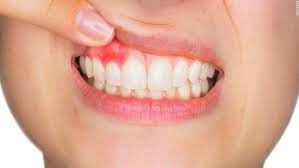Gum disease is common and unpleasant, but, according to a growing body of evidence, it could also play a role in a surprising range of seemingly unrelated health problems. Plaque, a sticky substance that contains bacteria, builds up on teeth. If it is not brushed away, the bacteria can irritate the gums.
The gums may then become swollen, sore, or infected; this is referred to as gingivitis.
In general, gum disease can be treated or prevented by maintaining a good oral health regime. However, if it is left to develop, it can result in periodontitis, which weakens the supporting structures of the teeth.
Gum disease, which is also called periodontal disease, is widespread. According to the Centers for Disease Control and Prevention (CDC), almost half of adults in the United States have some degree of gum disease.
The mechanisms behind periodontal disease are relatively well-understood, and newer research shows that this health problem may play a role in the development of a number of other conditions, including Alzheimerís disease, cancer, and respiratory disease.In this Spotlight, we will cover some of the surprising links between gum disease and disparate health issues.
Although spatially the gums are near the brain, one wouldnít normally associate dental complaints with neurological conditions.
However, some studies have found a link between periodontal disease and tooth loss and cognitive function. One study looking at cognitive performance followed 597 men for up to 32 years.
The authors conclude: ìRisk of cognitive decline in older men increases as more teeth are lost. Periodontal disease and caries, major reasons for tooth loss, are also related to cognitive decline.î
Researchers have also linked periodontal disease with an increased buildup of beta-amyloid in the brain ó the neurological hallmark of Alzheimerís. Other experiments have produced evidence that one type of bacteria commonly found in cases of periodontitis ó Porphyromonas gingivalis ó can be found in the brains of individuals with Alzheimerís.
Following on from that discovery, in a more recent study, researchers showed that P. gingivalis infection boosts production of beta-amyloid in the brain.
In this study, researchers paid particular attention to an enzyme produced by P. gingivalis called gingipain.
They found that this protease was toxic to tau, another protein that plays a pivotal role in Alzheimerís.










